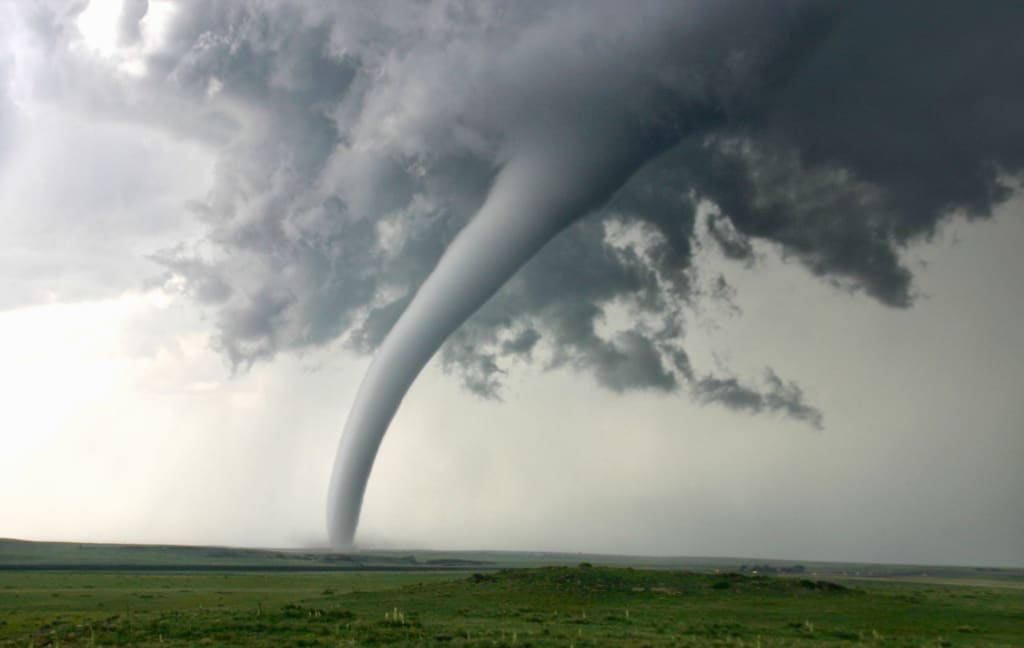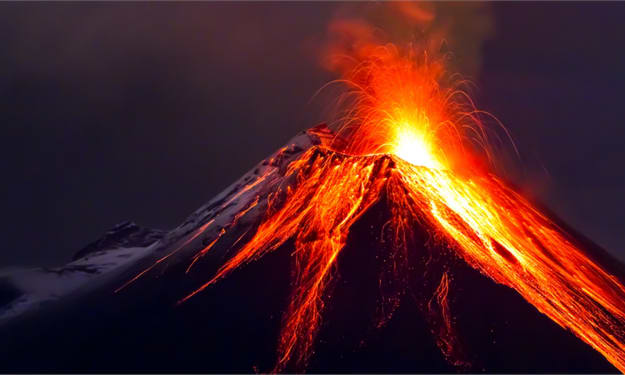
I'd like to share some information about tornadoes with you. Tornadoes are quickly rotating columns of air that form within storms. These columns connect with the ground through a funnel-shaped cloud and can cause significant damage to both life and property. Despite extensive research, much remains unknown about how tornadoes form. The conditions that lead to one tornado may not necessarily cause another. Nonetheless, we have learned a great deal since people first began recording tornadoes, such as how to recognize the signs of an impending tornado. Would you like to learn more about them?
Tornadoes typically develop within a particularly powerful type of thunderstorm called a supercell. These towering storms can be over 50,000 feet high and bring with them high force winds, giant hailstones, flooding, and lightning. These are the types of storms that have the potential to spawn tornadoes, but only under specific conditions. By measuring and observing various clues, meteorologists can forecast when these conditions are likely to occur.
The first ingredient needed for a tornado to develop is rising air. Any storm is formed when condensation occurs, releasing heat and becoming the energy that drives huge upward drafts of air. The more condensation and the larger the storm clouds grow, the more powerful those updrafts become. In supercells, this rising air mass is particularly strong. As the air rises, it can change direction and start to move more quickly. At the storm's base, a huge cloud base develops if there is a lot of moisture, which the tornado can later draw from if it gets that far.
When all of these factors are in place, a vortex can develop within the storm, forming a wide, tall tube of spinning air that may then be pulled upwards. This is known as a mesocyclone. Outside of the mesocyclone, cool, dry, sinking air begins to wrap around the back, forming what is known as a rear flank downdraft. This unusual scenario creates a stark temperature difference between the air inside the mesocyclone and the air outside, building up a level of instability that allows a tornado to thrive. The mesocyclone's lower part tightens, increasing the speed of the wind. If this funnel of air moves down into the large, moist cloud base at the bottom of the parent storm, it sucks it in and turns it into a rotating wall of cloud, forming a link between the storm that created it and the Earth. The moment that the spinning cloud touches the ground, it becomes a tornado.
Most tornadoes are small and short-lived, producing winds of 65-110 miles per hour. However, others can last for over an hour and produce winds of 200 miles per hour. They are both beautiful and terrifying, particularly if they are in your path. In that case, nobody, not even tornado chasers like myself, enjoys watching things unfold. Tornadoes come to an end when the temperature difference disappears and conditions become more stable or when the moisture in the air dries up. The once-fierce parent storm loses momentum and draws its tornado back inside. Nevertheless, meteorologists and storm chasers like myself remain vigilant, always on the lookout for signs of a storm.
Tornadoes are natural phenomena that are both violent and destructive, causing significant harm to humans and the environment. However, some individuals argue that tornadoes can also bring about positive effects, such as providing rain to drought-prone areas. Tornadoes often come with thunderstorms, which can deliver much-needed precipitation to dry regions. This helps to replenish soil moisture and groundwater, supporting the growth of crops, plants and grasses that in turn provide food and shelter for various animals.
About the Creator
Boboie Limen
Discovering and sharing knowledge is my passion as a Filipino citizen. Let me guide you through the vast resources available to us under the sun.






Comments
There are no comments for this story
Be the first to respond and start the conversation.